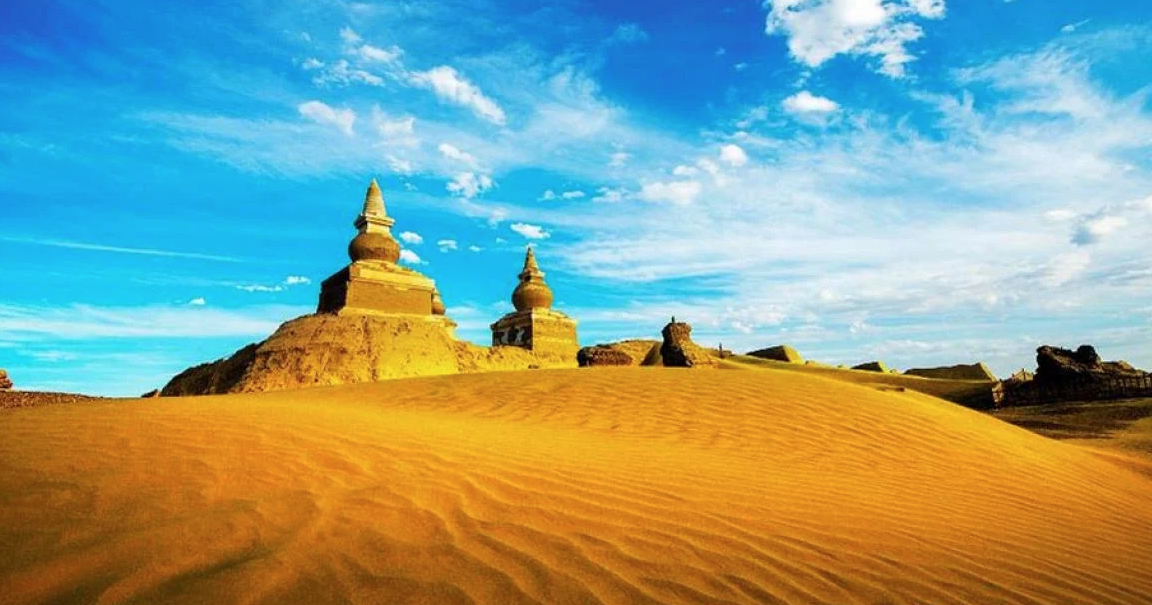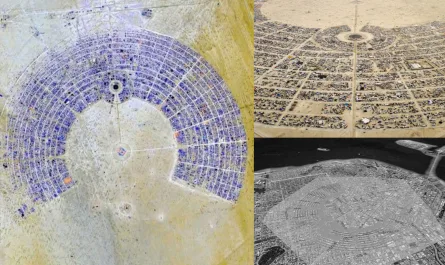Nestled in the desolate sands of western Inner Mongolia, China, the ruins of Khara Khoto stand as a silent testament to a once-thriving civilization. Known as the “Black City,” this ancient outpost along the Silk Road was a bustling hub of trade, culture, and diversity for centuries. Yet, by the late 14th century, it mysteriously fell silent, swallowed by the desert and forgotten for generations. Rediscovered in the early 20th century, Khara Khoto has since revealed a treasure trove of artifacts that offer a glimpse into its vibrant past and the enigma of its demise.

A Silk Road Beacon
Founded in 1032 during the Tangut-led Western Xia dynasty, Khara Khoto (meaning “Black City” in Mongolian) was strategically positioned along the Silk Road, a network of trade routes connecting East Asia to the West. Its location in the fertile Ejin River oasis made it a vital stop for merchants carrying silk, spices, and ideas across continents. The city flourished as a melting pot of Tangut, Chinese, and Central Asian cultures, with Buddhist monasteries, bustling markets, and fortified walls that spoke to its wealth and importance.
Khara Khoto’s architecture reflected its cosmopolitan character. Sturdy mud-brick walls surrounded the city, protecting its inhabitants from invaders and the harsh desert environment. Inside, temples adorned with intricate frescoes and homes filled with everyday goods painted a picture of a prosperous society. The Tangut script, a unique writing system, was used in religious texts and administrative records, showcasing the city’s cultural sophistication.
The Fall into Silence
By the late 14th century, Khara Khoto’s vibrancy faded. Historical accounts suggest the city met a dramatic end, possibly during the Mongol conquests under the Yuan dynasty. One theory points to a siege in 1372, where Mongol forces may have diverted the Ejin River, cutting off the city’s water supply and forcing its inhabitants to flee or perish. Another theory suggests internal strife or economic decline along the Silk Road contributed to its abandonment. Whatever the cause, Khara Khoto was buried under shifting sands, its name reduced to a whisper in historical records.

For centuries, the Black City remained hidden, preserved by the arid desert. Local legends spoke of a ghostly city lost to time, but it wasn’t until the early 20th century that explorers rediscovered its ruins.
Rediscovery and Revelation
In 1908, Russian explorer Pyotr Kozlov unearthed Khara Khoto during an expedition in the Gobi Desert. His team uncovered a wealth of artifacts that brought the city’s story back to life. Among the finds were Buddhist manuscripts written in the Tangut script, vibrant frescoes depicting religious scenes, and everyday items like pottery, coins, and tools. These relics painted a vivid picture of a city where spirituality, trade, and daily life intertwined.
The artifacts revealed Khara Khoto’s deep Buddhist roots, with texts and artwork reflecting Mahayana and Tantric traditions. Administrative documents hinted at a well-organized society, while personal items like combs and jewelry offered a human connection to the people who once called the Black City home. Many of these treasures are now housed in museums, such as the Hermitage in St. Petersburg, where they continue to captivate scholars and visitors alike.
The Allure of the Black City Today
Today, Khara Khoto’s ruins are a haunting destination for adventurers and historians. The crumbling walls and scattered stupas stand in stark contrast to the endless dunes, evoking a sense of mystery and melancholy. The site is remote, located in the Ejin Banner of Inner Mongolia, but it draws those willing to brave the desert for a glimpse of its past.
Ongoing archaeological work continues to uncover new insights, though the harsh environment and shifting sands make excavation challenging. Recent studies have focused on the city’s water management systems, hoping to confirm whether the Ejin River’s diversion was indeed its downfall. Meanwhile, the artifacts recovered from Khara Khoto remain a vital link to understanding the Tangut civilization and the broader history of the Silk Road.
Why Khara Khoto Matters
Khara Khoto is more than just a ruin; it’s a window into a lost world. Its story reminds us of the fragility of even the most prosperous societies and the power of nature to reclaim what was once grand. The Black City’s artifacts—texts, art, and relics—offer a tangible connection to a civilization that thrived over a thousand years ago, bridging cultures and continents.
For those fascinated by history, Khara Khoto is a call to explore the forgotten corners of our world. Its mysteries invite us to ask questions: What led to its fall? How did its people live, love, and worship? And what other secrets lie buried beneath the sands?
If you’re ever in Inner Mongolia, consider a pilgrimage to Khara Khoto. Stand among its ruins, feel the weight of centuries, and let the Black City whisper its story to you.


